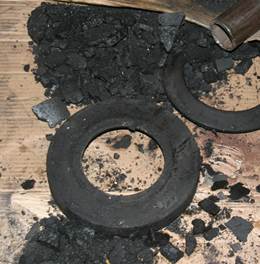Coke deposits can form in cavities and crevices leading to solids formation in valves and instrumentation. This can result in….
This 4 part series will explain how steam purging in delayed Coker valves can reduce or eliminate deposits and solids build up.
PART I: Coke Formation and Solids Deposition
Coke Formation
- Coke formation in valve cavities can be caused by asphaltene destabilization, aggregation, and degradation in low flow areas followed by dehydrogenation.
- It is most common at temperatures >750F (Cracking Conditions) and is particularly severe in drum feed and Heater Discharge lines.
- The “coking” rate can be highly variable depending on temperature and feed quality.
Solids Deposition
- Solids deposits come from foaming (“Foam-Over” implies a more catastrophic event) which can leave deposits in overhead vapor lines.
- Solids can form in valve components during a “non-cycle” condition.
- “Bulk Solids” (Sludge) can fall into valve cavities during valve cycling.
- Preformed Solids (coke fines, corrosion product, etc.) most commonly form in Blowdown, Fractionator Bottoms and Heater Isolation applications.
- Reliable, consistent Steam injection into a valve, critical components, cavity areas, introduced at a pressure above process, can prevent the Coke for forming.
This is accomplished through a continuous purging system, to be discussed further.








Leave a Reply
You must be logged in to post a comment.